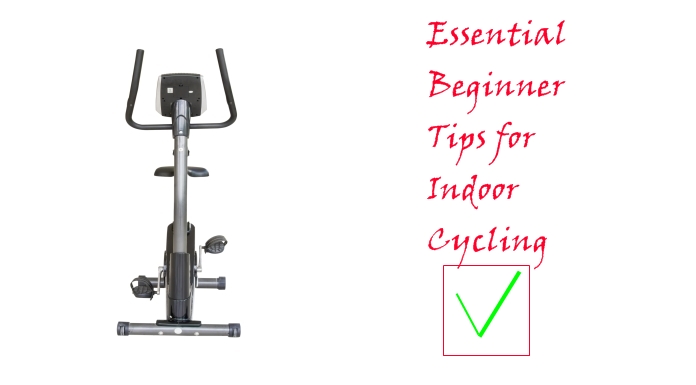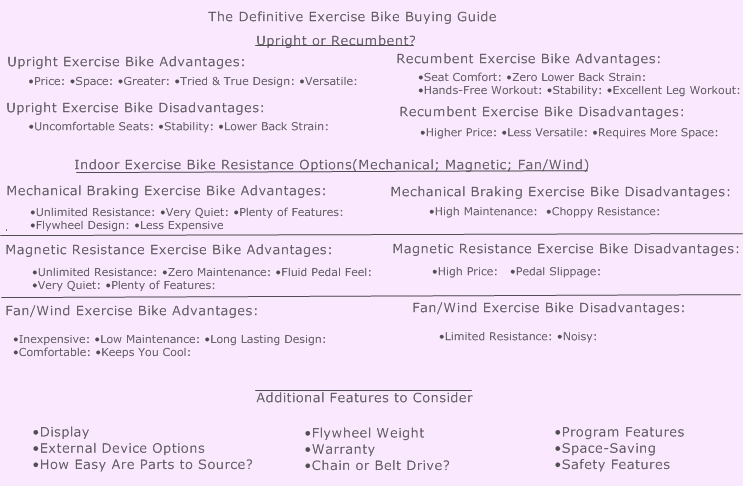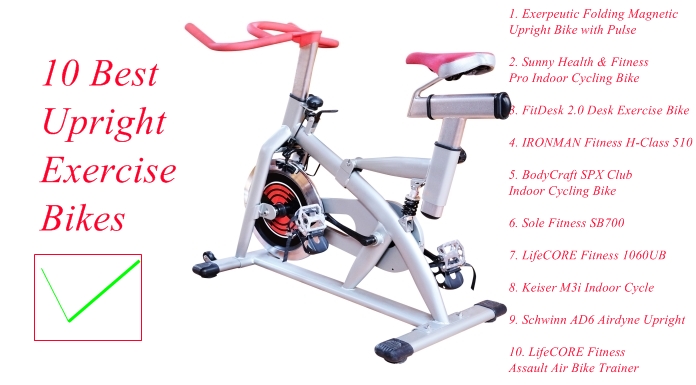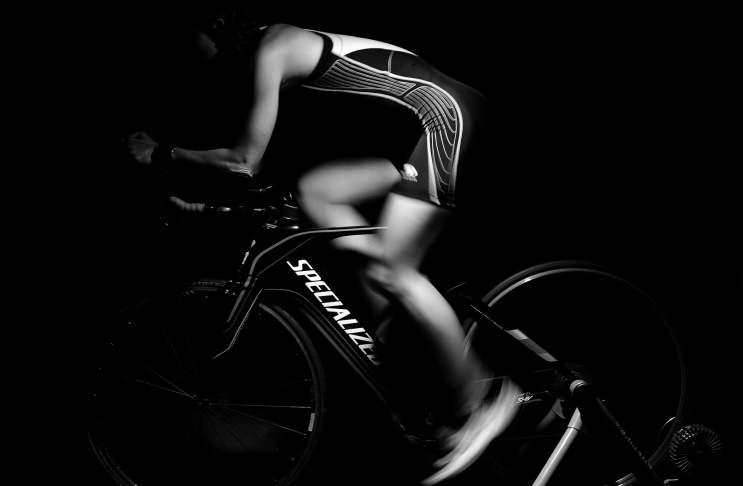Indoor cycling is a preferred mode of exercise for many. There’s almost always a spare stationary bike available at even the busiest of gyms, and their relatively small footprint is perfect for home use. Indoor cycling is among the lowest impact workouts you can perform, and offers a calorie burn that’s much higher than many other pieces of equipment on the market.
Just a single 45 minute indoor cycling session can burn as much as 600 calories, depending on the intensity exerted and a user’s unique metabolic rate. Considering a pound of fat is made up of 3500 calories, it’s possible to burn as much as a pound per week on your stationary bicycle, without even dieting!
Then there’s the obvious and well-known benefits to the heart and circulatory system. We all need at least 30 minutes of moderately intense exercise every day in order to prevent and treat heart disease, diabetes, and other metabolic disorders.
Despite how easy indoor cycling can be, there are still a few key things beginners need to know to get the most out of this equipment:
1. Wear Appropriate Clothing
Wear whatever top you feel most comfortable in. Light, moisture-wicking varieties are generally preferred over sweats for staying cool. Bicycle shorts should be on the top of any indoor cyclist’s list of things to wear, since shorts or baggy sweat pants can get caught up in the pedals and other parts of the machine.
Any sort of athletic or cycling-specific shoes will work great. Don’t head out and buy a special pair of shoes if you have a good pair of runners laying around. Sandals or slippers will also work just fine in a pinch.
2. Adjust the Bike for Maximum Enjoyment
For maximum comfort, safety, and all round enjoyment while indoor cycling, you’ll need to hone in on a few key adjustments:
• Seat Height: While standing next to the bike, adjust the seat to the same height as your hips. Once you get on and start riding, make sure your knees never pass ahead of your toes during pedaling. If they do, make incremental adjustments to seat height until the proper knee-toe alignment is achieved.
• Handlebar Placement: Adjust the height and distance between the seat and handlebars so that you’re not reaching. Handlebars set too low and/or too far ahead of you will cause avoidable low back strain.
Note: If you own a recumbent, follow the instructions provided by the manufacturer to ensure all settings are adjusted for maximum comfort and safety.
3. Learn to Relax Before Dialing up the Intensity
Indoor cycling is intense exercise when you get the resistance set just right for your own unique fitness level. But, that doesn’t mean you need to be all tensed up in the wrong places. Poor posture and use of the wrong muscles can make indoor cycling hard – in all the wrong ways!
Some of the worst areas indoor cyclist complain about is the neck, shoulder blades, back, and forearms. Most of these discomforts can be fixed by simply keeping your back straight, core tightened up to support your upper body, and your head and neck in-line with each other.
Focus on keeping your neck long and extended, with relaxed, slightly rounded shoulders. Try not to let your head dip down below the neckline, but also don’t force yourself to look up either, as this strains the neck and eventually, the shoulders and back.
Last, don’t grip the handlebars too tight – remember you’re not actually riding a bike outdoors and you don’t want to end up quitting early because your hands and forearms are giving out!
4. Look for the Right Time to Turn up the Intensity
There’s a line that’s uttered in spinning classes all over the planet, each and every day that goes something along the lines of “If you’re not standing, you’re not putting in work.” So, if you find yourself relaxing into this whole stationary biking thing and thinking how easy it is, you’re not working hard enough.
You’ll want to put in a solid warm up in the seated position for around 10 minutes. If you find you can still talk without sucking a little wind, or just know you’re not working hard enough, turn up the dial until you have to hover off the seat in order to keep those pedals pumping.
Any exercise is good exercise, and you don’t want to push it ridiculously hard if you’re out-of-shape, especially if you have heart or other cardiopulmonary problems. However, taking it too easy during your workouts, when you’re capable of doing more, will lead to less than optimal results. Many people stop working out altogether when they can’t get the results they want, despite putting the time in.
Additional Indoor Cycling Tips:
• Ensure all required maintenance is kept up on with all home gym equipment, including your stationary bike.
• Keep a fresh towel near your bike so you don’t have to jump off and interrupt your workout to “towel off”. This can be a particular problem when working out alone at home, because distractions can easily prevent you from getting back to the machine.
• Eat a snack around 1 hour prior to your workout. A healthy preworkout meal will consist of 20 grams of protein, 15 grams of slow-release carbs, and 10 grams of healthy dietary fats (note: you won’t find these ratios in a McDonald’s hamburger or French fries!)
• Keep fresh water close by. A good rule-of-thumb is 1 ounce of water for every minute spent working out hard (eg., a 30 minute riding session will require around 30 ounces of water.)
• It’s best to avoid trying to do other tasks while on the bike until you become comfortable with this exercise. Avoid “homework” or trying to manipulate weights and other equipment with your upper body, such as is often done in spinning classes.
Indoor cycling is a great way to get more of the exercise everyone needs to maintain a healthy bodyweight, and avoid the many diseases associated with a sedentary lifestyle.
Simply follow the tips listed on this page, stay safe, and most importantly: have fun sculpting the body of your dreams – whatever that may be!




